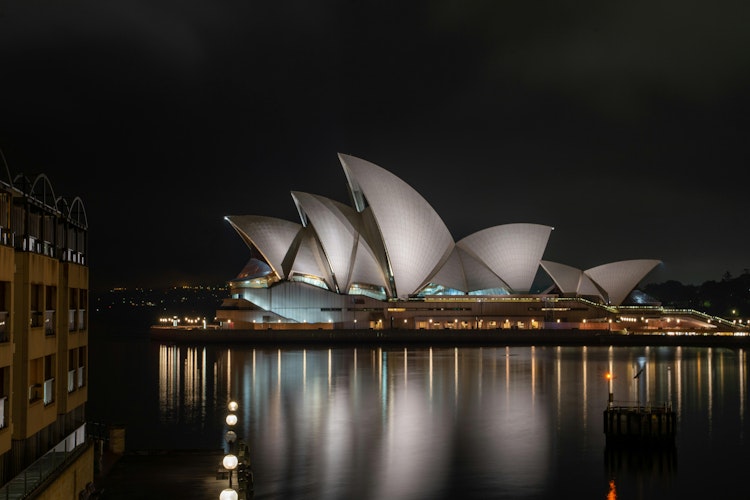The Evolution of Australian Pop Culture: From Bushrangers to Branded Entertainment
Sep 11, 2024, 7:47AM
Australia has come a long way from tales of rugged bushrangers. Despite the "Mad Max" franchise portraying the country as a hostile backwater, it has, in reality, made a remarkable transformation since the colonial era, becoming a diverse tapestry of digital-age expressions. The broader view of Australia is now becoming one that reflects its evolution and current identity as a growing global power. In this article, we'll explore how that's happened.
The bush legend isn't always a bad reflection on Australia, we should state that first and foremost. Literary works like "The Man from Snowy River" romanticised the outback, as did figures like Ned Kelly, creating a mythology of resilience and rebellion. And this resonates deeply with the national psyche. What these stories tell is a uniquely Australian narrative that has influenced cultural productions for generations. As we said, it's strictly a bad thing.
As Australia matured as a nation, indigenous influences began to permeate mainstream culture. Aboriginal art and storytelling was once marginalised, but is now gaining recognition and appreciation. You can see these changes in their integration into contemporary Australian works of art. The shift has enriched the country's cultural productions, giving them a more nuanced and inclusive representation of Australian identity. Faces that were once in the background, or not on screen at all, are now centre stage.
It's through art that the world has gotten to know Australian culture better, primarily through film and television. Put the dystopian landscapes of "Mad Max" aside for a second. Instead, think about the roguish "Crocodile Dundee", a movie that presents a completely different laugh-in-the-face-of-danger side of Australia. The cinematic landscape of Australia has succeeded in painting a vivid picture of the country's diverse environments and characters. Even TV shows like "Home and Away" became cultural ambassadors, showing international audiences a sun-soaked peek into Australian life.
Australian music also reflects this cultural evolution. Once, it was all bush ballads from artists like Slim Dusty. These songs captured the essence of rural Australia. But they've given way to a more global breed of chart-topper, such as Kylie Minogue and Tame Impala. By catering to a global audience, these artists make it to the veritable world stage, albeit via different routes. And yet, they remain distinctly Australian, proving that you don't have to ditch your cultural roots to become an international influence.
The digital age ushered in new ways of representing and engaging with Australian culture. Social media influencers now play a significant role in promoting Australian lifestyle and values to both domestic and international audiences. Even themed online pokies in Australia have incorporated national symbols and characters, demonstrating how deeply ingrained these cultural elements are in various forms of entertainment. This digital adaptation showcases the versatility and enduring appeal of the country's cultural icons.
This culture is so deeply ingrained around that you may not realise it. Think of your favourite advertising campaign for an Australian product. It probably involves distinctly Australian humour, one of the country's greatest exports. This example shows how the Australian identity has become commercialised. And it's this commercialisation of the identity that reinforces stereotypes. Yet, in theory, it also has the potential to evolve them. Characters for a particular brand campaign may start off as crude stereotypes before evolving once they've established a relationship with their audience. Art imitates life, and vice versa.
Several trends are likely to emerge in Australian pop culture. In Western media generally, there is a growing emphasis on diverse representation, and this is no different in Australia. The country's multicultural reality has rarely been at the forefront for its representation, but this is changing. The climate crisis is bringing environmental themes into sharper focus, and Australia has an incredibly unique range of flora and fauna. These landscapes will continue to inspire artists. And with social media encouraging a broader range of voices to tell their stories, we'll continue to re-evaluate our views on Australia.
It will be challenging to maintain a distinct cultural identity while catering to a global audience. Creators will be tempted to round the edges off that chippy Australian voice. While this is understandable, it would also be a mistake. The same characteristics that make some dismiss Australian work is what will draw others to it. Having said that, we can't get too 'local' and must give some consideration to international audiences. But that doesn't mean we need to dwell on the Anglo-centric narrative we've pushed for decades. This new age should reflect upon the country's complex history and celebrate multiculturalism.
Embracing this new direction will help Australian pop culture take a new form. We're excited to see the stories that it produces and the characters that finally get a moment in the spotlight. And, of course, stories that continue to show what bonds every Australian - the curt sense of humour, the sunny disposition, and the grit that helps us to adapt to a changing world.



